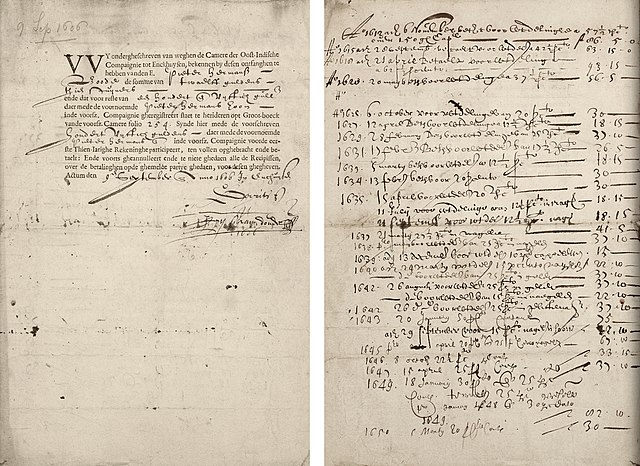The East India Company (EIC) was an English, and later British, joint-stock company founded in 1600 and dissolved in 1874. It was formed to trade in the Indian Ocean region, initially with the East Indies, and later with East Asia. The company gained control of large parts of the Indian subcontinent and colonised parts of Southeast Asia and Hong Kong. At its peak, the company was the largest corporation in the world by various measures and had its own armed forces in the form of the company's three presidency armies, totalling about 260,000 soldiers, twice the size of the British army at the time.
James Lancaster commanded the first East India Company voyage in 1601
Red Dragon fought the Portuguese at the Battle of Swally in 1612, and made several voyages to the East Indies
The emperor Jahangir investing a courtier with a robe of honour, watched by Sir Thomas Roe, English ambassador to the court of Jahangir at Agra from 1615 to 1618, and others
A document with the original vermilion seal of Tokugawa Ieyasu, granting trade privileges in Japan to the East India Company in 1613
A joint-stock company (JSC) is a business entity in which shares of the company's stock can be bought and sold by shareholders. Each shareholder owns company stock in proportion, evidenced by their shares. Shareholders are able to transfer their shares to others without any effects to the continued existence of the company.
The transfer letter from 1288 through which Bishop Peter of Västerås reacquires an eighth of Tiskasjöberg, Kopparberget. The original can be found at Riksarkivet (National Archive) in Stockholm.
One of the oldest known stock certificates, issued by the VOC chamber of Enkhuizen, dated 9 Sep 1606






